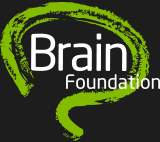
PROJECT SUMMARY:
A child born with Duchenne muscular dystrophy (DMD) is not physically distinguishable from any other baby in regards to their ability to move at this very early age. However with the increasing mobility of the growing child, delays in movement milestones such as crawling and walking are noticeable. The disease progression through the first decade of life is very severe, the child loses normal posture and the use of limbs, resulting in confinement to a wheelchair. This continues through the second and third decade of life, with the patient likely succumbing to respiratory or cardiac failure in this time. The underlying cause of the disease is a genetic one, but the progression of the disease is associated with contraction-induced damage to the muscles. Underlying this damage is the entry of calcium into the muscle that most likely activates deleterious pathways in the muscle, reducing normal function.
Calcium is dissolved at very high concentrations normally in the bodily fluids and has many important roles in the healthy body. Inside muscle (and all other tissues and organs) it is present at very low concentrations when the muscle is not contracting. In DMD too much calcium enters the muscle from that in the bodily fluids, upsetting the normal levels of calcium inside the muscle. What could further improve the outlook for DMD patients would be treatments or drugs that would redress the normal calcium balance across the surface of the muscle. By imaging calcium in muscle fibres with new techniques developed in our lab we aim to identify the way that calcium enters muscle fibres normally and how this changes in DMD. This information could provide potential ways to prevent calcium overload in dystrophic muscle.


 The Brain Foundation is the largest, independent funder of brain and spinal injury research in Australia. We believe research is the pathway to recovery.
The Brain Foundation is the largest, independent funder of brain and spinal injury research in Australia. We believe research is the pathway to recovery.